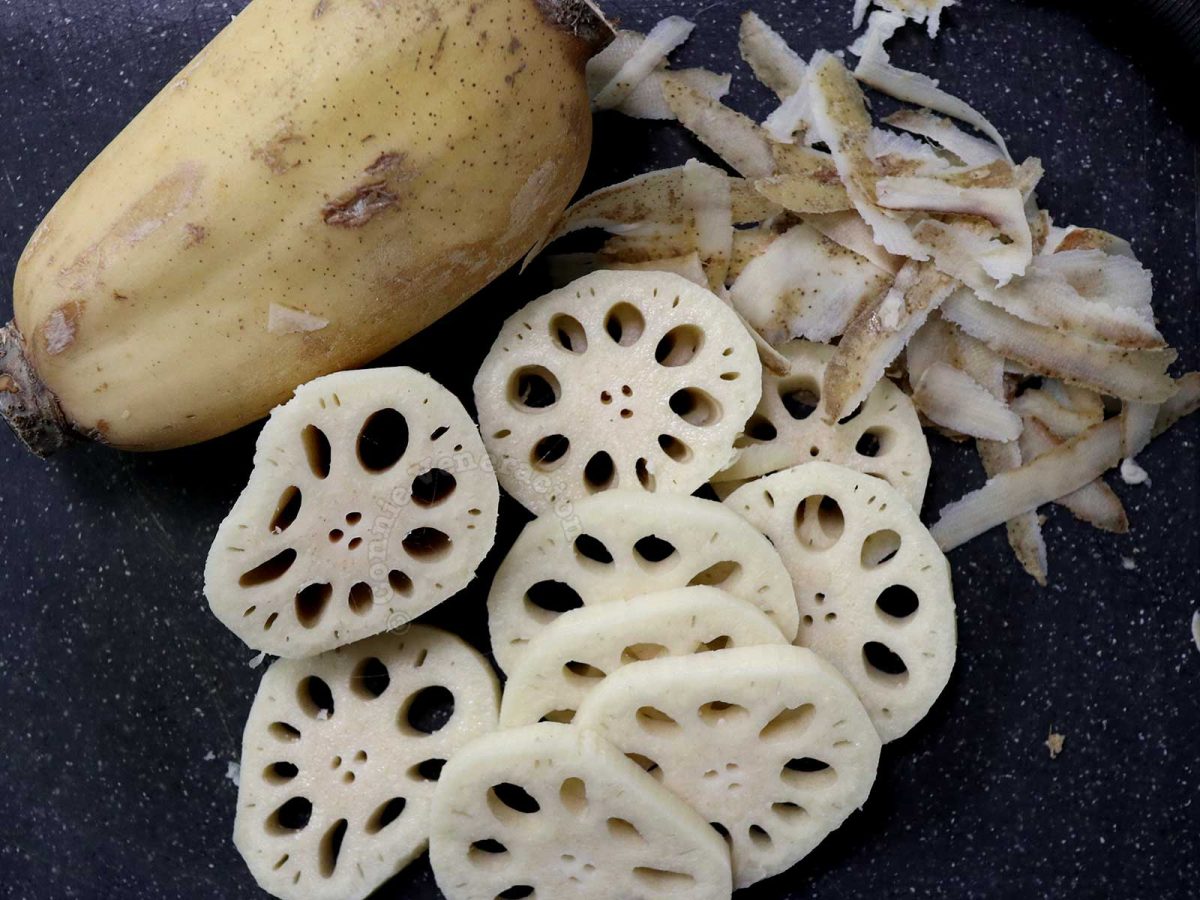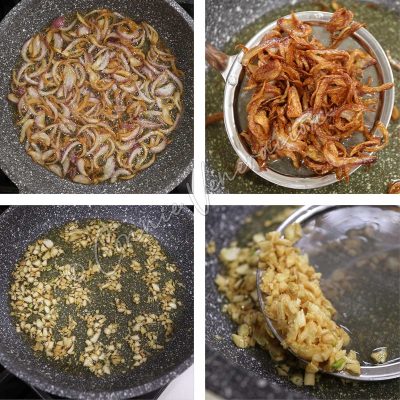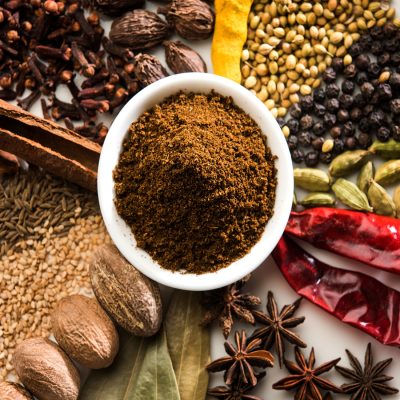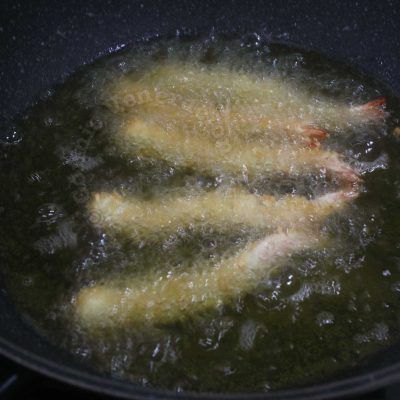What is lotus root?
Lotus root is the rhizome of an aquatic plant often mistaken for water lily. The rhizomes grow in the water. Above the water surface, what are visible are the flowers and leaves.
Fresh lotus root
Ideally, fresh lotus root should be free from bruises. The flesh should be firm when you squeeze it lightly between your fingers.
If there are discolorations on the skin, press right there to see if the discoloration is only skin deep or if the flesh underneath that portion has turned soft. If the flesh feels as firm as the rest of the rhizome, it should be good.
Fresh lotus root has a short shelf life. It loses moisture fast so cook it within a day or two. Otherwise, wrap in layers of paper towel and keep in the vegetable drawer of your fridge where it should stay good for a few days longer.
Prepping lotus root for cooking
Lotus root has a thin skin which you can remove easily using a vegetable peeler. Once the skin has been peeled, cut the flesh into whatever shape you desire. Slicing thinly is the default.
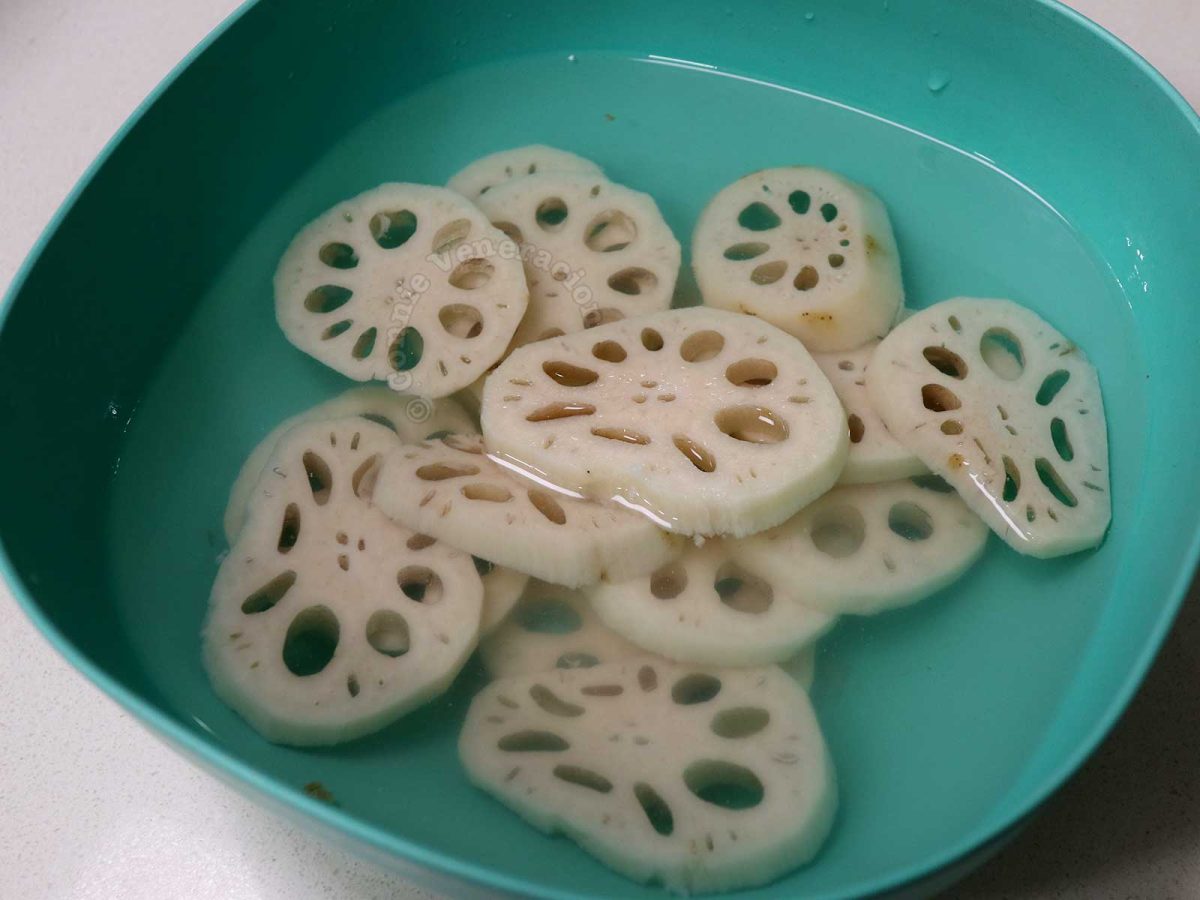
Once the flesh is exposed to air, oxidation follows and that leads to discoloration. If you want to preserve the dainty off-white color of the vegetable, soak the cut lotus root in water mixed with a teaspoon of vinegar. Drain once you’re ready to cook.
How is lotus root cooked?
As mentioned earlier, it can be added to soup and stir fries, or fried. It can also be used in stews. Note, however, that the longer the cooking time, the less crunchy the lotus root will be. Extended cooking also gives it a starchier texture.
Dried and canned lotus root
Dried lotus root is mainly sold pre-sliced. Once you open the package, transfer to a jar with a screw-type cap and store in a cool place away from the sun.
To use dried lotus, rehydrate in hot water to plump up then drain and use as you would fresh lotus slices.
Canned lotus root comes soaked in a briny solution. It doesn’t have the same flavor as fresh lotus but, naturally, the shelf life is longer and prep time is shorter.

